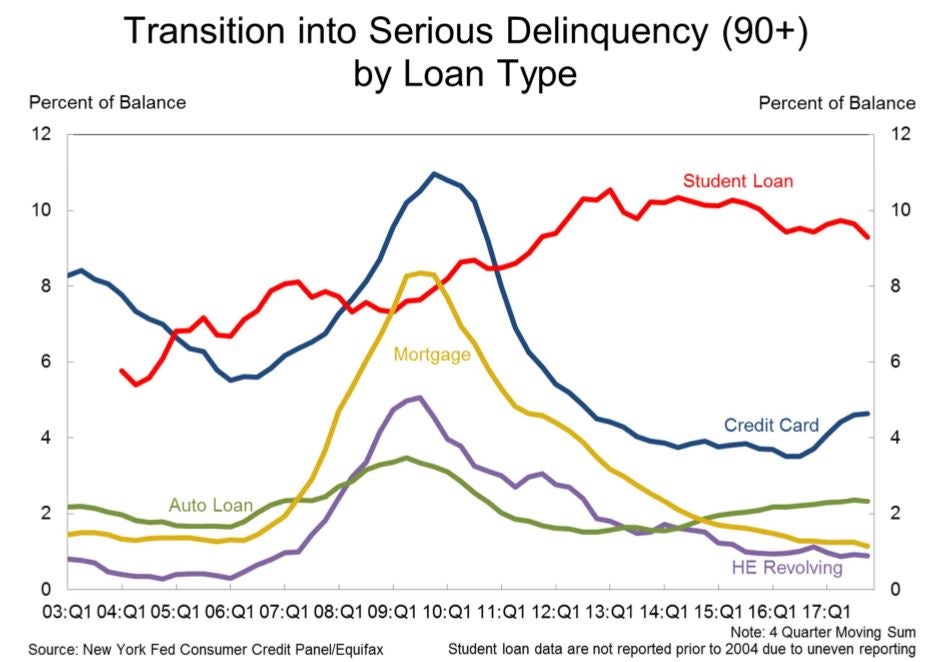Fact Checking
Well-Known Member
What about this disaster: Student Loans Owned and Securitized, Outstanding
Well, the key metric would be distressed debtors in serious delinquency, which appears to be dropping for student loans:

Which is not unexpected with record low unemployment.
The total rise in federal student loan debt would be normal with ~10 year loan terms. The rise began in early 2010:

So I'd expect it to start leveling off in 2-3 years time.
Since these sums are owed to the federal government the recession risks are lower - there's no danger of a debt crisis spreading to the private sector.
So I'd not label it a 'disaster' - in fact I think these student loan debts should be largely forgiven for everyone who got a degree as a result - society is better off with more educated people.
Also, the debt financed undergraduate tuition system in the U.S. is a pretty blatant rip-off right now, which is essentially rent-seeking behavior on the backs of poorer students who often have no choice but to get a student loan.


